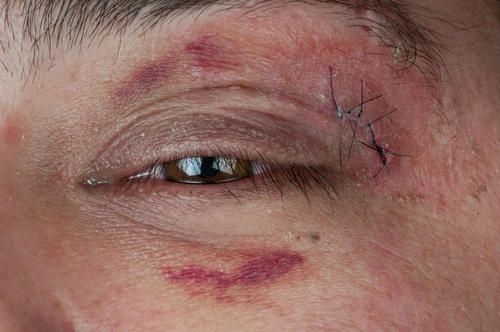Focus on These Updates to ICD-10 Codes for Eye Care Specialists

Here’s a closer look at your coding options in Ophthalmology.
New and expanded diagnosis codes for suspected amblyopia, non-exudative age-related macular degeneration, retinal vein occlusion, and diabetic retinopathy are the highlights ophthalmology coders should look for when the next batch of ICD-10 revisions become effective this October.
Background: In March, the ICD-10 Coordination and Maintenance Committee released its list of new and revised ICD-10 codes for fiscal year 2017. The codes take effect for dates of service on Oct. 1, 2016, or later. Overall, the Centers for Disease Control and Prevention (CDC) and the Centers for Medicare & Medicaid Services (CMS) will introduce 1,900 new diagnostic codes.
New Diabetes Options That Matter
Many of the changes in ophthalmology diagnosis coding will be seen in the E08.3xx (Diabetes mellitus due to underlying condition with ophthalmic complications), E09.3xx (Drug or chemical induced diabetes mellitus with ophthalmic complications), E10.3xx (Type 1 diabetes mellitus with ophthalmic complications) and E11.3xx (Type 2 diabetes mellitus with ophthalmic complications) code series.
The expansion of these series will mostly be due to eye specificity – adding one extra digit to specify whether the right, left, both, or unspecified eyes are affected.
These ICD-10 codes already contain a great deal of detail, including which type of diabetes is present (Type 1 or Type 2), and the type and severity of the ophthalmic condition. Each additional character in the code adds more specificity.
For example, for Type 1 diabetes, you would start with the E10.3 series. From E10.3, you would move on to the fifth character, which describes the type and severity of the ophthalmic condition. (E10.31: unspecified diabetic retinopathy; E10.32: mild nonproliferative diabetic retinopathy; E10.33: moderate nonproliferative diabetic retinopathy; etc.)
The sixth character, if any, specifies whether or not macular edema is present (e.g., E10.331, Type 1 diabetes mellitus with moderate nonproliferative diabetic retinopathy with macular edema.)
The ICD-10 revisions for 2017 will, in many cases, add a seventh character to these codes, which will specify which eye is affected:
Example: Effective Oct. 1, 2016, ICD-10 code E08.321 (Diabetes mellitus due to underlying condition with mild nonproliferative diabetic retinopathy with macular edema) will no longer be valid. In its place, you will report one of these more specific codes:
More Specificity for RVO Dx
By contrast, the retinal vein occlusion codes already have specific characters explaining which eye is affected. The additional characters in those codes beginning Oct. 1 will specify whether macular edema or retinal neovascularization is present, or if the eye is stable.
Example: Before Oct. 1, you would report central retinal vein occlusion in the right eye with H34.811 (Central retinal vein occlusion, right eye). After Oct. 1, that code will no longer be valid. Instead, report one of the following:
The same holds true for the tributary (branch) retinal vein occlusion (H34.83x) code series – you will add a seventh character (0, 1, or 2) to describe macular edema, retinal neovascularization, or stability.
Specify Side, Stage With New Wet or Dry AMD Codes
You will also see a dramatic expansion within the age-related macular degeneration (AMD) diagnosis codes. Currently, you have two to choose from, depending on whether the patient suffers from nonexudative (dry) or exudative (wet) AMD:
On Oct. 1, 2016, ICD-10 will delete both of those codes, in favor of a series of more specific codes. The new codes add two characters on to the existing five characters, which will specify not only which eye is affected, but which stage.
The sixth character will specify the eye:
The seventh character will represent the stage of the condition. For the dry AMD codes (H35.31), look for these seventh characters:
For the wet AMD codes (H35.32), ICD-10 will introduce these seventh characters:
Example: The patient is diagnosed with bilateral dry AMD with active choroidal neovascularization. Report ICD-10 code H35.3231 (Exudative age-related macular degeneration, bilateral, with active choroidal neovascularization).
New Choices for Glaucoma, Amblyopia
The revisions to ICD-10 will not lengthen the primary open-angle glaucoma codes (H40.11xx), but they will add more specificity. The new codes will replace the current sixth character in these codes, an “X” placeholder, with one of four codes representing which eye is affected:
Example: Prior to Oct. 1, you would report a diagnosis of severe-stage primary open-angle glaucoma with H40.11X3 (Primary open-angle glaucoma, severe stage), regardless of which eye was affected. After Oct. 1, you would pick one of the following codes, which replace the “X” with the new sixth character representing a specific eye:
In addition, four new codes will debut on Oct. 1 in order to identify and monitor suspected cases of amblyopia:
Background: The American Academy of Ophthalmology made the case for these codes to the ICD-10 committee last September. In most cases, with older patients, amblyopia – decreased vision in one or both eyes compared with normal vision – is documented with eye charts or fixation preference testing, notes the AAO.
However: With children, “In some cases it is hard to be certain of the diagnosis,” the AAO claims. “For instance a young child is unable to read a chart but has refractive, strabismic, or eye structural problems that often are associated with amblyopia. While these conditions can be coded in some instances, the possible presence of amblyopia cannot be coded.”
Solution: “The presence of these codes in the medical record and problem list would serve as a reminder that this child has significant risk factors that can be associated with permanent visual loss due to amblyopia,” says the AAO. “A unique code would serve as a reminder so the child receives ongoing medical observation and timely intervention when required.”
Resource: For more ICD-10 information, visit www.cms.gov/Medicare/Coding/ICD10. For a complete list of the ICD-10 additions, deletions, and revisions, visit http://1.usa.gov/22ZxeNI.




